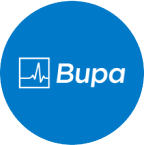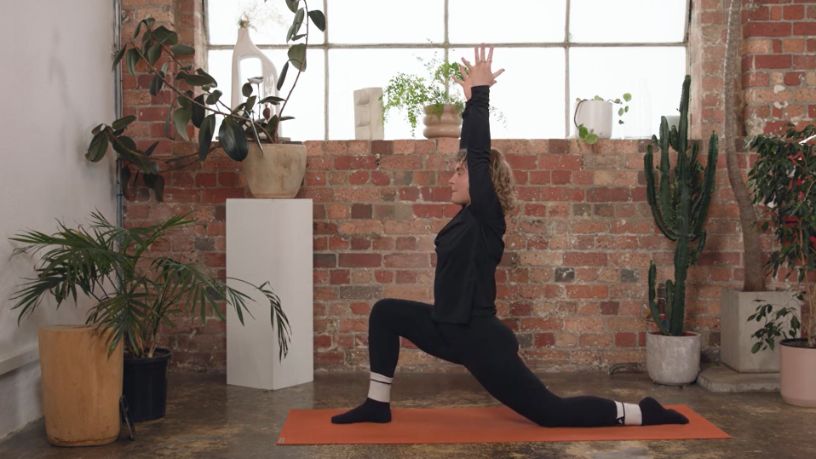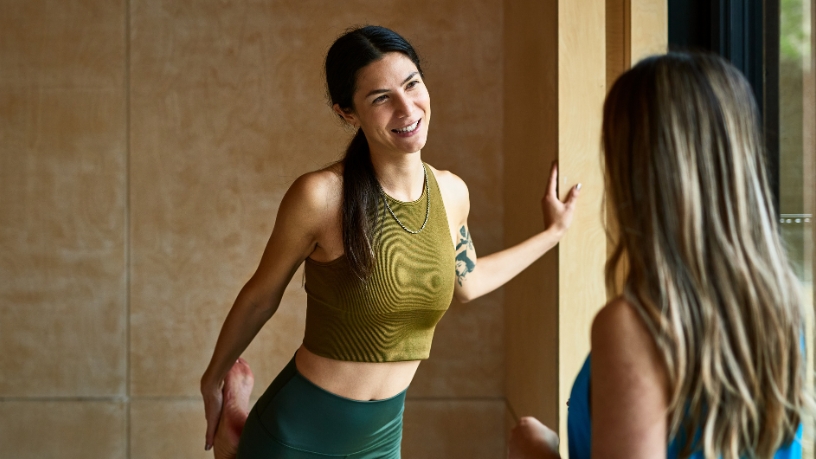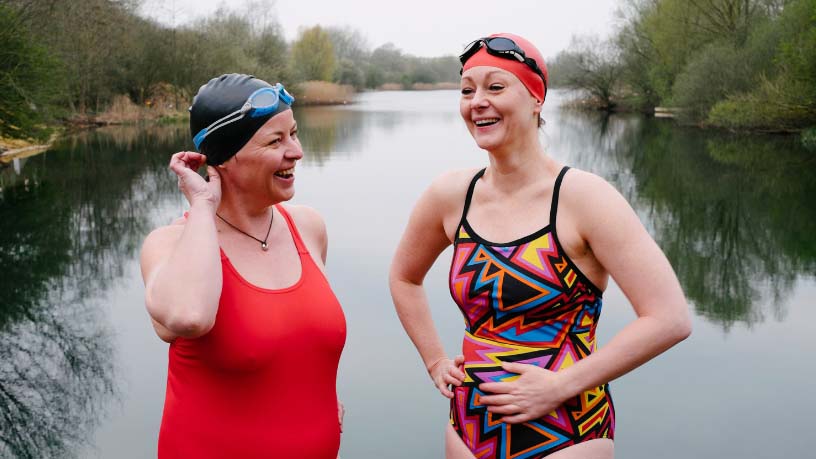The cold weather might make working out seem harder than it is in the warmer months, but it doesn't have to be.
Key takeaways
You can try some basic strength exercises to target specific parts of your upper, lower and core body.
Learn 5 easy strength-based exercises that you can do at home.
As the weather cools down, it can be hard to find the motivation to get out and be active. But there is a simple solution: Get moving at home!
These 5 winter-friendly exercises can all be done in the comfort of your own home and require little to no equipment (an exercise mat is ideal).
Each exercise targets different muscles in your body, testing your strength, flexibility and endurance. You might choose to focus on one or 2 of these exercises in your workout, or incorporate all of them into a workout 'circuit'.
If you're new to exercise or have an existing health condition, please check with your GP before embarking on any exercise program. If you experience any pain while trying these exercises, stop what you're doing and speak with your GP or a healthcare professional.
Push-ups
Push-ups help strengthen your upper body, including your chest, shoulders and triceps.
If you're new to push-ups, it might be better to begin on bent knees or inclined on a bench or table to start building up your strength.
Technique
1. Get in position: Place your palms flat on a surface with your hands out slightly wider than your shoulders and your arms straight. Your elbows should be slightly bent and not locked.
Then, with your knees or toes hip-width apart, hold yourself up in position. If you're doing push-ups from your toes, make sure your knees are slightly bent and not locked.
Once in position, engage your core by activating your abdominal muscles, and keep your torso stable but not stiff. Aim to hold your body in a straight line from your head to your heels, and keep your eyes fixed down.
2. Lower yourself down: Slowly lower yourself down until your elbows reach 90 degrees. Inhale as you make this movement.
3. Push back up: Once your nose is close to the surface, push yourself back up to the starting position, exhaling as you go.
Repeat 10 times until you feel confident doing more.
Planks
This exercise is great for core stability and endurance. The benefits of planking are wide-ranging, as good core and abdominal strength can help with coordination while lowering stress on your muscles, which is great for overall fitness.
Best of all, planks are easy to perform. All you need to do is strike the right pose and hold it!
Technique
1. Get in position: Place your forearms and palms flat on the ground, facing forward, with your elbows directly below your shoulders. Relax your head and look down at the floor.
Stretch your legs back as far as feels comfortable and, with your feet about 10cm apart, move onto your toes. Start activating your core by engaging your abdominal muscles.
2. Hold: Once in position, maintain the plank for 10 to 20 seconds. The goal of a plank is to keep your body as straight as possible and your core continuously activated. You may need to push your bum down to keep that line straight.
If you struggle to stay in place for this long, practise tabletop planks (straightened arms with your palms on the floor, resting on bent knees rather than your feet).
When you're comfortable planking and feel your strength and stability increasing, aim to plank for longer periods.
Squats
Designed to work areas of your lower body (including your quads, hamstrings and glutes), squats are fantastic for keeping your legs strong and mobile.
Mastering the perfect squat takes time and practise, so don't be discouraged if you end up stumbling over the first few times. Balance is key for this exercise, and the stronger your legs become, the better you'll squat.
Technique
1. Get in position: Standing up, place your feet out slightly wider than your hips. Either clasping your fingers together or clenching one fist and covering it with your other hand, make a triangle shape with your forearms.
Activate your core by engaging your abdominal muscles and poke your chest slightly outward.
2. Squat down: With your feet flat (or as close to it as possible), slowly bend your knees and lower your bum toward the ground. Hold your posture by maintaining a neutral spine, keeping your hips back and your head forward. It helps to keep your eyes fixed on one position for balance.
3. Move back up: Once you've lowered down as far as feels comfortable, raise yourself back up to the original standing position. Remember to keep your posture fixed and your core engaged.
Complete repetitions of 10 until you feel comfortable doing more. Once you've built up enough strength, you can hold a weight for an added challenge.
Lunges
Like squats, lunges are fantastic for strengthening your lower body and improving balance. The exercise works your legs, particularly around your quads, glutes and hamstrings. Once you've built up strength in these areas, you'll find that you'll be walking, exercising and even sitting down better.
Again, like squats, perfecting the lunge requires building up your technique so that you have strength and balance. You might find yourself falling over the first few times, which is perfectly normal.
Technique
1. Get in position: Keeping your shoulders back, rest your hands on your waist. Make sure your back and torso are straight. Engage your core by activating your abdominal muscles.
2. First lunge: Step one foot forward, approximately 1 metre in front of your other foot. Once you're in this split-stand position, bend both of your knees and slowly lower your body down until your back knee hovers a few centimetres from the floor.
Remember to keep your spine straight with your hands on your hips. If you're having trouble balancing, keep your eyes fixed on something in the distance. Try to keep your weight evenly distributed between both legs as you lunge down.
3. Push back up: Keeping weight on the heel of your front foot, move back up to your starting position. Maintain your posture as you come up.
4. Second lunge: Repeat the same motion with your feet in the opposite positions.
Complete 10 lunges per leg.
Glute bridges
Also known as a hip raise, this exercise works your buttocks (glutes), lower back, abdomen and hamstrings. It's great for strengthening your core and improving stability in your spine.
Glute bridges are less intensive than the other exercises on this list, and work as a great wind-down exercise at the end of a circuit or workout.
Technique
1. Get in position: Lie on the ground with your knees bent up and your feet flat on the floor, in line with your knees. Rest your arms next to your body. Activate both your abdomen and buttocks by engaging the muscles.
2. Raise your glutes: With your arms and shoulders remaining flat on the ground, lift your hips up into the air until there's a straight line running from your knees to your shoulders.
Squeeze your abdominal and buttocks muscles tightly and hold this position for around 30 seconds.
3. Lower down: With your muscles still engaged, slowly lower your hips back down to the starting position.
Repeat 10 times.
Levelling up
Once you've mastered these exercises, you can level up your workout with a range of other strength-based home exercises.
If you're feeling inspired, booking in to see a personal trainer can be a great way to get started and find your form. But if you're self-motivated, there are a range of online tutorials to help you find new exercises (burpees, v snaps and mountain climbers to name a few) to level up your home workouts.

At Bupa, trust is everything
Our health and wellbeing information is regularly reviewed and maintained by a team of healthcare experts, to ensure its relevancy and accuracy. Everyone's health journey is unique and health outcomes vary from person to person.
This content is not a replacement for personalised and specific medical, healthcare, or other professional advice. If you have concerns about your health, see your doctor or other health professional.
You might also like...
Pilates and yoga inspired workout with Kath Ebbs
Break a sweat (and get downward dog) with Kath Ebbs and their Pilates and yoga inspired workout!
Energising qigong flow
Are you looking for a gentle movement to help you unwind and release stress? Follow along with Dani Cullen as she demonstrates a calming qigong flow.
8 tips to make exercising fun (if it isn’t already)
There are people who love exercising... and then there's the rest of us. We’ve put together 8 things you can try to make exercise fun and get moving.
5 tips to start exercising (and stick with it)
Exercising regularly is one of the best things you can do for your health, but it’s not always easy to get started. Try these 5 tips to help get moving.





